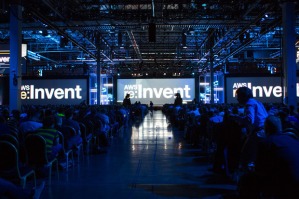By John Patzakis
Earlier this year, X1 launched MS 365 data connectors to our X1 Enterprise Collect platform to provide a previously unmet critical need for enterprises to conduct cost-efficient yet highly scalable eDiscovery search and collections of MS 365 data. The response has been tremendous, with X1 seeing record demand. This is because X1 Enterprise Collect provides users the unique ability to search and collect MS 365 data in-place, in a targeted and iterative manner, at speeds and throughput far exceeding other tools, including Microsoft Purview Premium.
And now, X1 has released X1 Enterprise Collect 5.1, which features two major advancements:
- Full support for modern attachments in MS Mail to go along with our support for modern attachments in Teams. X1 is the only solution we and our partners are aware of that supports the search and collection of modern attachments in MS 365 without the need for a Premium (E5) license.
- Even greater speed and scalability. X1 Enterprise Collect does not operate by simply making bulk calls to the MS Graph API, like most eDiscovery tools, which also require a premium license to collect the key data such as modern attachments. X1 employs a targeted, custodian-based approach that minimizes 365 API calls, and does not rely on the MS Search Index, which has been demonstrated to be untrustworthy and with limited throughput. X1’s approach enables a very scalable, defensible, and robust data collection now at speeds 10x that of other approaches.
Many customers report to us that Microsoft Purview Premium’s documented inability to timely handle anything other than small matters due to their 2GB per hour throughput limit (which X1 is not subject to due to our direct connection approach) is disqualifying for them. eDiscovery and investigation matters need to be addressed expediently. X1 can address a matter involving 100 custodians at 10GB of MS 365 data each within 24 hours (search, collection and export), while Microsoft Purview Premium, per Microsoft’s own documentation, would take up to several weeks.
In addition to the aforementioned enhancements with version 5.1, X1 Enterprise Collect offers the following additional unique benefits unmatched by other independent software providers:
• The ability to target individual custodians and specific messaging threads, displacing any need to mass download channels in Teams or Mail
• Unified search and collection of on-premise and cloud data sources, including Teams, OneDrive, SharePoint, Mail, laptops and file-shares for an optimized approach
• X1’s patented technology enables the indexing, searching and processing of the targeted data in-place, removing any reliance on premium processing or supplemental services
• One-click upload into Relativity for review, for a streamlined end-to-end process
• A truly automated product solution, as opposed to a service-based offering
Winston & Strawn eDiscovery partner Bobby Malhotra notes: “With the vast number of users and unyielding amount of data in collaboration applications such as Teams, having the ability to target and triage data by specific custodians and threads allows organizations to handle discovery in an efficient and pragmatic manner. X1 provides the unique ability to seamlessly collect and search across numerous data sources.”
X1 Enterprise Collect version 5.1 is now available for deployment in the cloud, on-premise, or on-demand. For a demonstration of the X1 Enterprise Collect Platform, contact us at sales@x1.com. For more details on this innovative solution, please visit www.x1.com/x1-enterprise-collect-platform.






 This show had a much different energy than other enterprise software conferences, such as
This show had a much different energy than other enterprise software conferences, such as 
